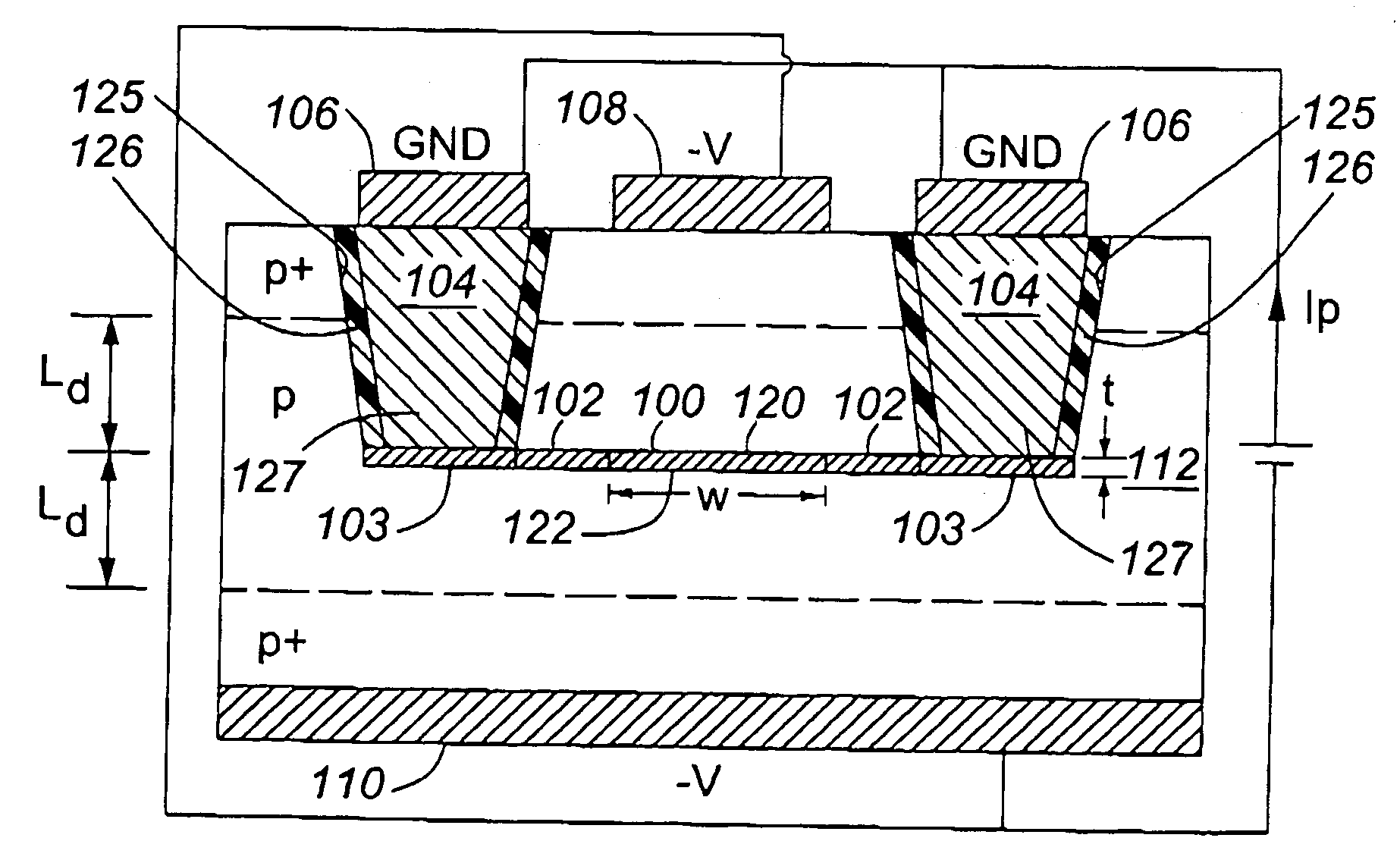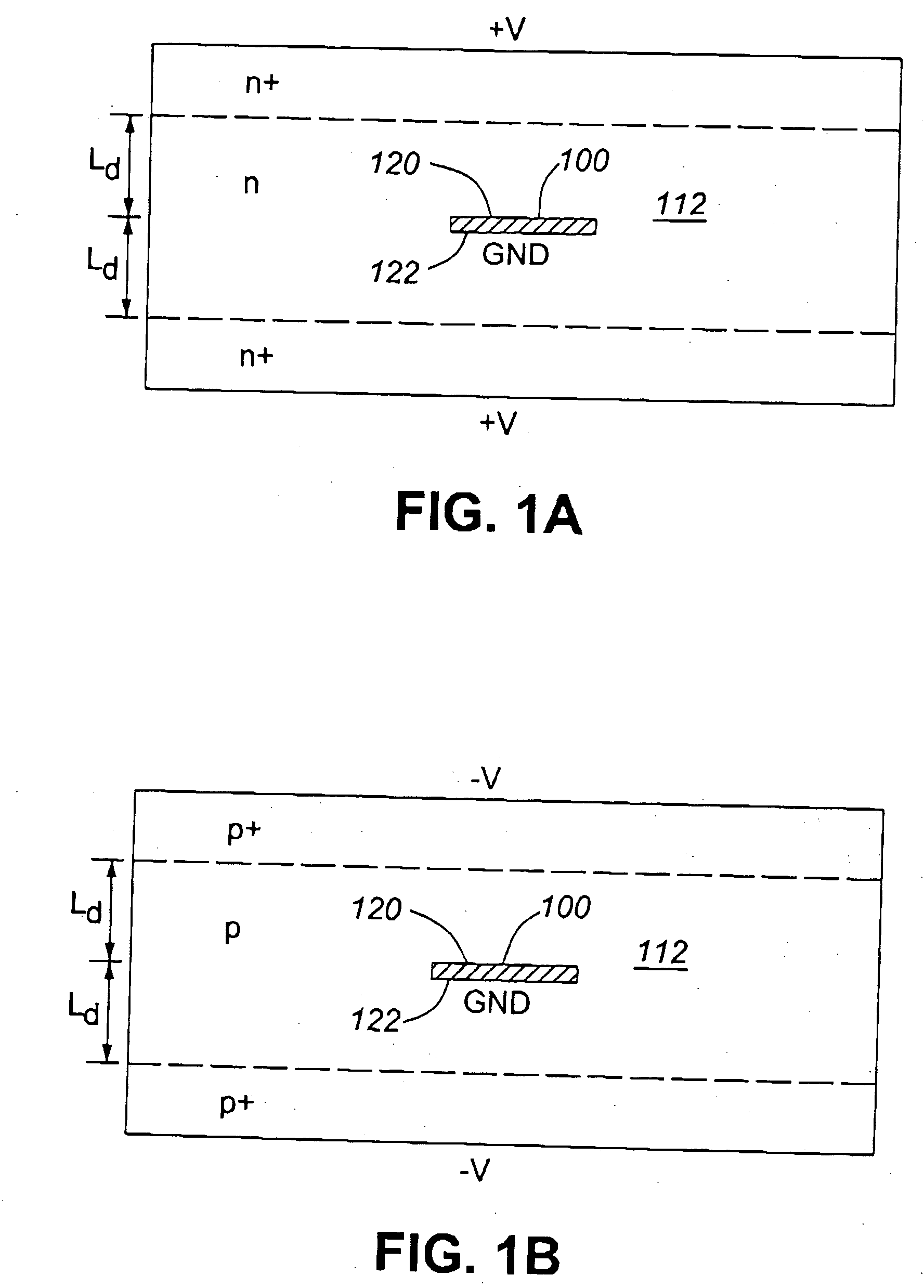Schottky barrier photodetectors
a technology of photodetectors and barriers, applied in the field of schottky barrier photodetectors, can solve the problems of low external quantum efficiency levels, difficult integration with optical fibers and other optical waveguides in an integrated optical circuit, and inability to achieve uniform absorption over a wavelength rang
- Summary
- Abstract
- Description
- Claims
- Application Information
AI Technical Summary
Benefits of technology
Problems solved by technology
Method used
Image
Examples
Embodiment Construction
[0083] From the theory developed above, it is clear that both the Schottky barrier height and the Schottky barrier / waveguide dimensions affect the photodetector performance. The length and cross sectional area of the waveguide affect the absorption; the longer, wider and thicker the waveguide the greater the absorption of light in the metal layer. The surface area of the Schottky barrier contact affects the dark current of the detector; the larger the metal-semiconductor contact area the greater the dark current. The greater the dark current the higher the minimum detectable power. Just as the waveguide dimensions have conflicting effects on the photodetector performance so does the Schottky barrier height. The lower the Schottky barrier, the higher the dark current and minimum detectable power but the higher the responsivity, as well. The absorption of the metal waveguide depends not only on the dimensions of the waveguide but also on the material selection. Depending on the optica...
PUM
 Login to View More
Login to View More Abstract
Description
Claims
Application Information
 Login to View More
Login to View More - R&D
- Intellectual Property
- Life Sciences
- Materials
- Tech Scout
- Unparalleled Data Quality
- Higher Quality Content
- 60% Fewer Hallucinations
Browse by: Latest US Patents, China's latest patents, Technical Efficacy Thesaurus, Application Domain, Technology Topic, Popular Technical Reports.
© 2025 PatSnap. All rights reserved.Legal|Privacy policy|Modern Slavery Act Transparency Statement|Sitemap|About US| Contact US: help@patsnap.com



